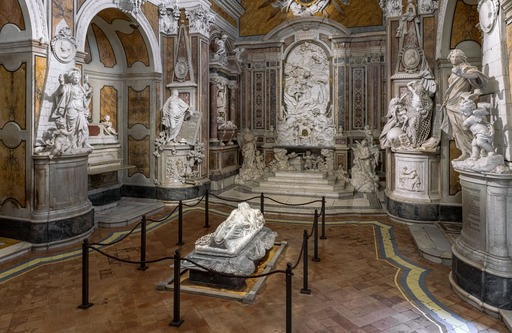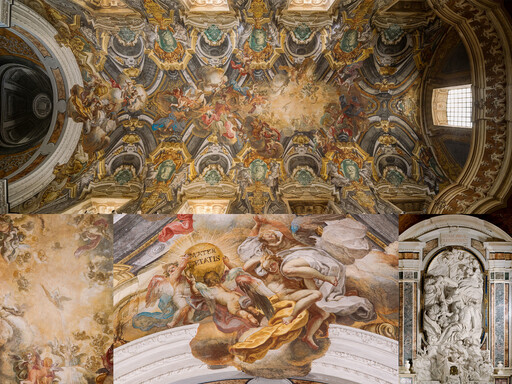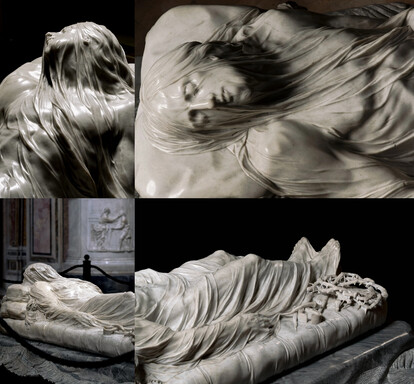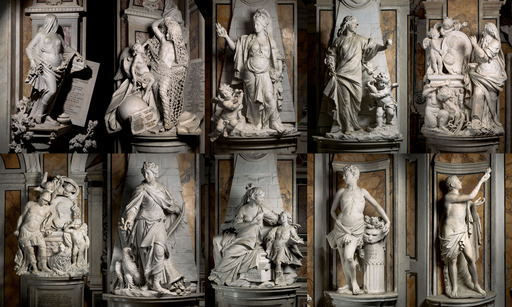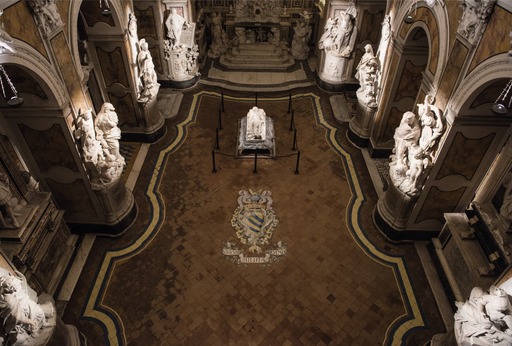Cappella Sansevero
This post will be different than usual. Taking photographs is forbidden inside the cappella, so these are not mine, but taken from their web site (I hope they will not sue me for the mountains of money I make with each post).
But it is impossible not to mention Cappella Sansevero, in the heart of the old city center of Napoli, right next to Basilica di San Domenico Maggiore. The pieces on display stand out even in a city that is full of spectacular art; if you like sculpture, or art in general, you probably already know at least some of them, since they are frequently listed as some of the most stunning works of all time.
The most famous of them is the piece at the center, Giuseppe Sanmartino's Cristo Velato (1753), closely followed by Antonio Corradini's Pudicizia (1752) and Francesco Queirolo's Disinganno (1754), all of which are so unbelievably vivid they barely look like statues made entirely of marble.
Many other works complete the densely-packed exposition, such as the high relief behind the main altar (Francesco Celebrano's Deposizione, 1756), but the main feature are the ten statues of the Virtues along both lateral walls, from the entrance to the altar, which include the two already mentioned; they are: Pudicizia, Disinganno, Soavità del giogo coniugale, Sincerità, Zelo della religione, Dominio di se stessi, Liberalità, Educazione, Decoro, and Amor divino.
Even if you cannot make it to Napoli to see these in person, the Cappella has a website full of high-resolution pictures and additional information, so you can do a virtual tour. And one final note: if you do decide to go there, make sure to reserve tickets in advance (which can be also done via their website), they were sold out the first time I went and I almost missed it the second time. Oh, and take the audio guide, it's very good.
Cum rerum natura in consortium omnis aevi patiatur incedere, quidni ab hoc exiguo et caduco temporis transitu in illa toto nos demus animo, quae immensa, quae aeterna sunt, quae cum melioribus communia?
Since Nature allows us to commune with every age, why do we not abstract ourselves from our own petty fleeting span of time, and give ourselves up with our whole mind to what is vast, what is eternal, what we share with better men than ourselves?
